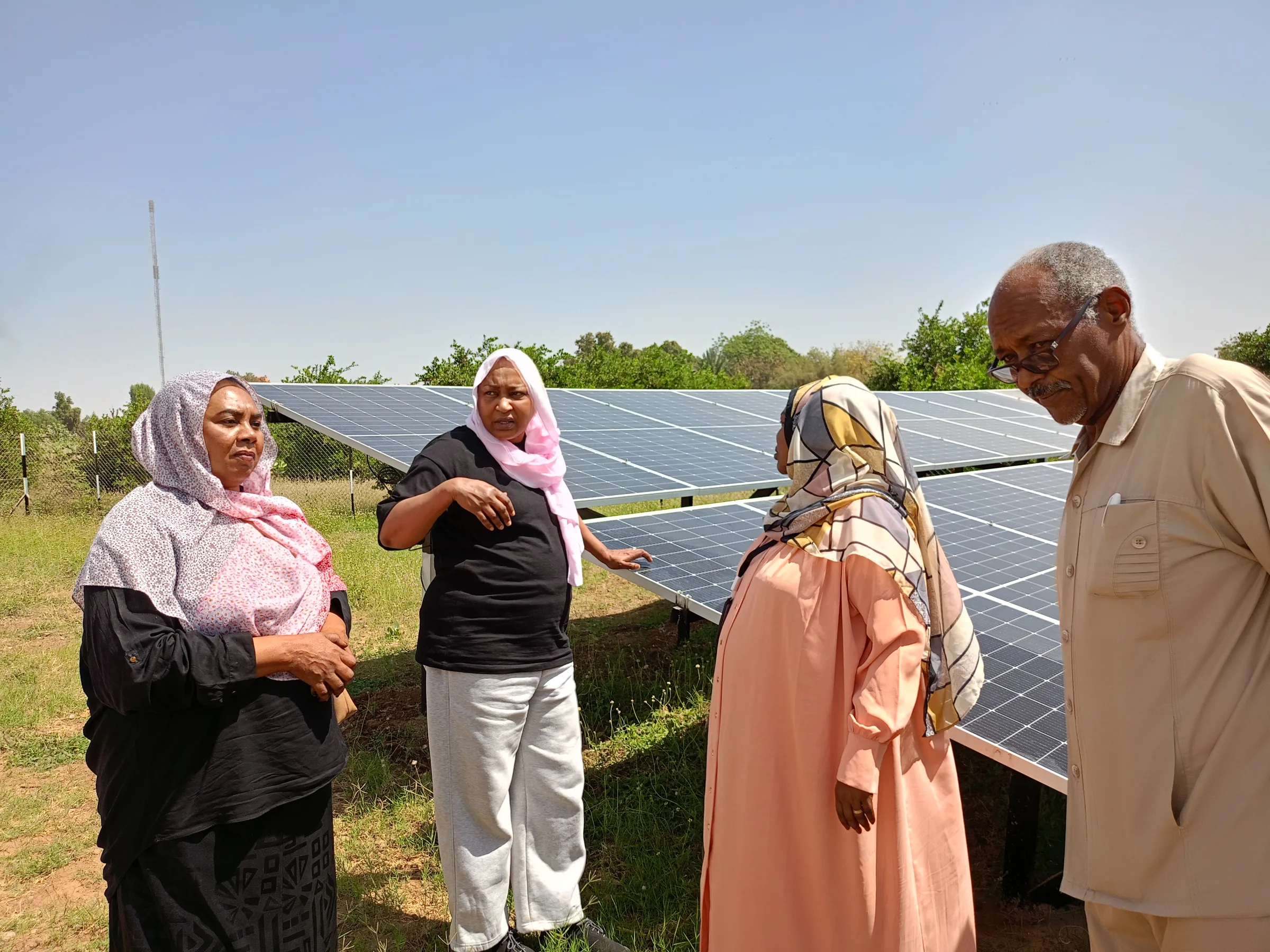USAID cuts are 'worst I've ever seen,' says Sudanese aid worker

Muna Eltahir, country director for Practical Action in Sudan, talks to community members in Sudan about solar panels which have been installed to help them pump water to irrigate their crops in this undated photo. Practical Action/Handout via Thomson Reuters Foundation
What’s the context?
The head of the Practical Action charity in Sudan says USAID cuts have left communities without power and water during Ramadan.
NAIROBI - With more than 30 years experience as a humanitarian worker in Sudan, Muna Eltahir thought she had seen it all.
The northeastern African nation has in recent years witnessed mass public protests and coups and is embroiled in an almost two-year civil war which has pitted the Sudanese army against rebel Rapid Support Forces.
Throughout these tumultuous events, Eltahir's charity Practical Action has continued its work helping communities cope with the increasingly severe effects of climate change.
Sudan is highly vulnerable to global warming, facing more frequent droughts, erratic rainfall and regular flooding, all of which hit farming, livelihoods and food security.
But Eltahir says U.S. President Donald Trump's recent decision to stop aid to some of the poorest countries in the world, including Sudan, has proved to be Practical Action's biggest challenge.
What work does Practical Action do in Sudan?
We are currently working in Kassala and Gedarif states. These areas are drought prone as there is erratic rainfall. We provide communities with drought-resistant seeds, tools and knowledge to grow crops, such as millet, to feed themselves and sell to have some income.
We also help communities to construct water points such as water tanks which they link through pipes to nearby water sources such as rivers and lakes.
In addition, we also offer solar panels to the communities - through an affordable pay-as-you-go scheme - which provide lighting but also power water pumps to irrigate their crops.
We were helping nearly 400,000 people before the USAID cuts were announced in January.
What impact have the USAID cuts had on your work?
USAID was providing $2.5 million for a project supported by the World Food Programme (WFP) to supply people in Kassala and Gedarif with seeds, solar power and water tanks. The project was benefiting 126,000 people.
On the morning of Jan. 25, I received an email from WFP telling me to stop all work we were doing on the project. I had to suspend all the contracts and place people on redundancy. It was difficult - we lost 11 of our 51 staff.
The communities were expecting to have solar lighting and easier access to water through the construction of the water tank before Ramadan, and they were very excited about it.
I had to visit the communities and explain what had happened - it was very hard for me and I couldn't sleep in the days before I had to meet them and explain the situation.
There have been many crises in Sudan which have affected the work of the humanitarian sector, but the USAID cuts have been the worst I've ever seen.
What has been the reaction of communities you are helping?
The communities were very understanding when we explained the full situation and that this was a decision from the U.S. government, and that it wasn't our decision.
Luckily, we had already distributed the seeds and tools to the farmers, and they had begun planting, but all our other equipment - solar panels, water tanks, pipes etc. - have been left under the safe-keeping of the communities until we know what to do with them.
What will Practical Action do now?
We are actively looking for donors to fill the gap in funding. We have been talking to donors and all have been very positive.
We are fortunate that we have a diversified source of funding from different donors, and not just USAID. But USAID contributed about 25% of our funding in Sudan, so it is still a big blow to the communities we are helping - but we can still continue with other programmes.
This interview has been edited and condensed for clarity.
(Reporting by Nita Bhalla; Editing by Ellen Wulfhorst.)
Context is powered by the Thomson Reuters Foundation Newsroom.
Our Standards: Thomson Reuters Trust Principles
Tags
- Government aid
- War and conflict
- Water


















